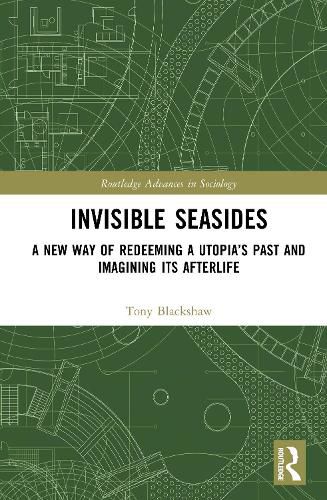Readings Newsletter
Become a Readings Member to make your shopping experience even easier.
Sign in or sign up for free!
You’re not far away from qualifying for FREE standard shipping within Australia
You’ve qualified for FREE standard shipping within Australia
The cart is loading…






Invisible Seasides positions the seaside as a lens for understanding lived utopia, pinned in a certain place, an immovable feature in a landscape where our hopes and fears continue to unfold. Wide-ranging in theme, it brings a double perspective, past and present, to bear on how we understand contemporary seaside experience.
Presenting a magical paradox of the modern seaside, the book traces the development of a cultural phenomenon from the mid-1800s to the present day. In the process, it modifies the accepted narrative about its rise and fall, reappraising our understanding of the end of a Mass Utopia, and shining new light on the diversity of post-utopias that have emerged in its afterlife.
Fusing social theory, social history and leisure studies its thesis adroitly envisions the diverse density of the seaside through a critical lens, making the unfamiliar familiar and vice versa, providing us with an exemplar for a different way of thinking sociologically, which will be used by scholars from a range of different subject fields to encourage fresh reflection on social continuity and change.
$9.00 standard shipping within Australia
FREE standard shipping within Australia for orders over $100.00
Express & International shipping calculated at checkout
Invisible Seasides positions the seaside as a lens for understanding lived utopia, pinned in a certain place, an immovable feature in a landscape where our hopes and fears continue to unfold. Wide-ranging in theme, it brings a double perspective, past and present, to bear on how we understand contemporary seaside experience.
Presenting a magical paradox of the modern seaside, the book traces the development of a cultural phenomenon from the mid-1800s to the present day. In the process, it modifies the accepted narrative about its rise and fall, reappraising our understanding of the end of a Mass Utopia, and shining new light on the diversity of post-utopias that have emerged in its afterlife.
Fusing social theory, social history and leisure studies its thesis adroitly envisions the diverse density of the seaside through a critical lens, making the unfamiliar familiar and vice versa, providing us with an exemplar for a different way of thinking sociologically, which will be used by scholars from a range of different subject fields to encourage fresh reflection on social continuity and change.